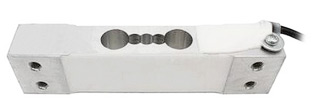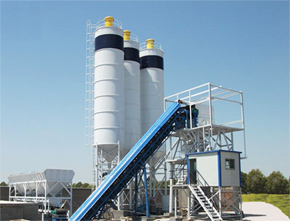
ATO Load Cells
+1 800-585-1519 (Toll-free)
Home » FAQ
The growing demand for products, including kitchen scales, body scales, postage scales and handheld scales, has fueled promotion of both the production capacity and quality of low capacity load cells. In order to allow more clients to select the right load cell for themselves based on the integrated performance of the scale, reduce the cost, improve product quality and enhance product competitiveness on the basis of ensuring the integrated performance, this paper mainly provides several methods on how to choose the right low capacity load cell (taking the load cell with a double-hole parallel-beam structure for example) based on some commonly-used performance parameters.


In recent years, weighing cheating occurs in the measurement of electronic weighbridge in many areas. Driven by economic interests, some outlaws take various cheating ways in weighing the gross weight and tare of vehicles, which may lead to a measurement deviation of several hundred kilograms to several tons, thus benefiting from it. This paper mainly analyzes the cheating ways of electronic weighbridge, puts forward the methods of on-site inspection and suggests how to prevent and avoid cheating.
When the load cell faults occur. Firstly, it's necessary to carefully distinguish the system structure and whether the load cells have the following problems before removing the load cell from the weighing system:
- Check if there is a system transmission failure, the fault may be caused by dust, misalignment of mechanical parts or delayed component force transmission, rather than a load cell fault.
- Check if there are damages, rust or obvious wears at the force transmission part of the system. In winter days, it shall be noticed that whether the force transmission part is frozen, which affects the force transmission and relay of the system.
- Check whether the caging device of the system works and if the gap meets the requirements.
- Check whether the load cell cable is correctly connected to the junction box and display instruments, if there are broken wires or bad contacts between connecting wires. Focus on checking the connection reliability of nine-core plug of the bus and junction box.
- Check if there are faults in connection boxes and meters, particularly the potentiometers and terminals in junction box.
- Check whether the load cell is corroded or damped (particularly the patch hole area). Check the completeness of load cell cable. Check the environment at the entrance of load cell cable.
In order to ensure the load cell accuracy and service life, following details and tips should be paid attention to in the installation of load cell:
- Load cells should be handled lightly and gently. Particularly for the small capacity load cells with alloy aluminum as the elastomer, any impact or drop caused by vibration may cause great output error.
- When designing and installing the loading device, the action line of loading force should coincide with the stress axis of load cell, so as to minimize the effects of inclined and eccentric loads.
- On level adjustment. If a single load cell is used, the mounting plane of its base should be adjusted to horizontal by a gradienter. If several load cells are used for measuring at a same time, the mounting surface of their base should be kept in one horizontal plane, so as to ensure that each load cell bears a basically same force.
Selection of load cells in the weighing system usually considers the capacity, accuracy, installation space of load cells, possible influence of surrounding environment on load cells, loading types and service life of load cells. The weighing system of engineering mixing equipment is no exception, but the only difference is that different weighing systems focus on different aspects due to different requirements and working conditions of engineering mixing equipment.
Several problems need to be considered when selecting the load cell for the weighing system of engineering machinery mixing equipment. This article focused on analyzing the influence of the protective structure of the load cell on the operational reliability of the engineering machinery mixing equipment. It is pointing out that the protection class represented by the IP code cannot cover the full protection requirements of the load cell. Different types of mixing plant are recommended to use the load cells with different protection capabilities.
Engineering mixing equipment include concrete mixing plant, asphalt mixing plant, stabilized soil mixing plant and marine concrete mixing plant, the concrete mixing plant is most commonly used. Next analyses are made with the concrete mixing plant as an example.

Several problems need to be considered when selecting the load cell for the weighing system of engineering machinery mixing equipment. This article focused on analyzing the influence of the protective structure of the load cell on the operational reliability of the engineering machinery mixing equipment. It is pointing out that the protection class represented by the IP code cannot cover the full protection requirements of the load cell. Different types of mixing plant are recommended to use the load cells with different protection capabilities.
Engineering mixing equipment include concrete mixing plant, asphalt mixing plant, stabilized soil mixing plant and marine concrete mixing plant, the concrete mixing plant is most commonly used. Next analyses are made with the concrete mixing plant as an example.
Faults of strain gauge load cells in use often cause weighing system drift, unstable display or non-display of data. Next this article mainly introduces some common faults, troubleshooting methods and steps of analog load cells.
There are many causes for load cell faults, but in summary, they can be divided into internal and external causes. The internal causes mainly refer to the faults caused by the load cell itself, while the external causes refer to the damage caused by human or natural factors, such as load cell overload, impact, or accidental fall, forceful drag of load cell cables, thunder strike or large current passing through the load cell, chemical corrosion, dampness, high dust environment, or the aging of components in load cells and so on. For these fault causes, we can analyze them from several main parts of the load cell. The load cell consists of three parts: elastomer, resistance strain gauge and output circuit. From the perspective of load cell faults, the essence is output fault. Therefore, we should use the correlation method to analyze, namely analyzing with the signal output process of the load cell itself.
There are many causes for load cell faults, but in summary, they can be divided into internal and external causes. The internal causes mainly refer to the faults caused by the load cell itself, while the external causes refer to the damage caused by human or natural factors, such as load cell overload, impact, or accidental fall, forceful drag of load cell cables, thunder strike or large current passing through the load cell, chemical corrosion, dampness, high dust environment, or the aging of components in load cells and so on. For these fault causes, we can analyze them from several main parts of the load cell. The load cell consists of three parts: elastomer, resistance strain gauge and output circuit. From the perspective of load cell faults, the essence is output fault. Therefore, we should use the correlation method to analyze, namely analyzing with the signal output process of the load cell itself.
The load cell is installed between the load receptor and the foundation installation surface. If the load cell is simply connected and thereafter used, it will not only not achieve the expected weighing accuracy, but also easily cause the damage of load cell and safety accidents. As a key component of weight measurement, load cell connections directly affect the accuracy of weighing measurement results. Moreover, the load cell connections also play a more important role in resisting all kinds of interference in practical applications.
